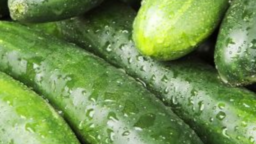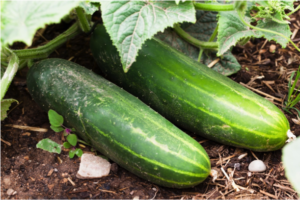Cucumbers are the perfect vegetable even though scientifically, they’re considered to be a fruit. No matter what you classify them as what matters is that they are extremely tasty and rather versatile. They taste great on salad, can be eaten alone, and are used in dozens of recipes. In addition, there’s nothing quite like a cucumber that you grew yourself, in your backyard garden. Although the kind grown outdoors tend to have spines and bumps on them, making them not-so-pretty to look at, they taste good. In order to produce a garden full of tasty cucumbers, you need to know what to do.
Start Them as Seeds
Cucumbers survive the act of transplantation well, so they can be started as seeds in small pots or in larger seedling containers. You can either put them outdoors or in a greenhouse, depending on the overall air temperatures. If it’s too cold, the seeds won’t sprout. It has to be a consistent 68 degrees Fahrenheit in order for them to grow properly. If you have the luxury of growing your seedlings indoors, under a grow light, then this won’t be an issue. The best thing is that cucumber plants grow fairly quickly, so if you have a shorter growing season, they will still bear fruit.
Related Article: 7 Tips to Grow the Perfect Tomatoes
Thin Your Seedlings
Once your seedlings start to grow, you’ll need to thin them. There should be only one per small pot or section of your seedling container. Choose whichever one looks the strongest and remove the others to give it plenty of space to grow.
This Crazy 56-Year-Old Geography Teacher in Memphis, Tennessee Believed He Could Change the Energy World… And Somehow He Did It. Don’t believe me, check it out here>>>
Plant Them Outside
Once the weather warms up for good, it’s time to move your cucumber plants outdoors. They do grow well in containers and grow bags, as long as those pots are large enough. Choose ones that hold at least seven gallons of soil, and note that you’ll need one of them for each plant. Fill the pots with potting soil (which has properties that promote drainage and prevent root rot) and then plant your cucumber seedlings in them. If you’re placing your cucumbers in the ground, choose a location that gets plenty of sunlight.
Since cucumber plants turn into vines, they’ll need room to grow. Now is the time to put a trellis or cucumber frame behind them. As the plants start to vine out, encourage them to grow up the trellis or frame. However, if you’re growing them in pots on a porch, you won’t need these extra accessories, as the cucumbers can be “coerced” into growing over the porch rails.
Suggested Article: Why are my Vegetables Not Growing?
Watering and Care
Cucumber plants are prone to powdery leaf mildew, so keep an eye on those leaves. Make sure that the soil is kept moist, particularly once they start to grow fruit. Fertilize your cucumber plants at least once per season, or more often if you’re growing them in a pot or grow bag. The nutrients in that soil will vanish fairly quickly, so you’ll need to fertilize them at least once a month. If you see signs of powdery leaf mildew or other problems, make sure to deal with them quickly, as you don’t want your plants to get damaged. Other than this, cucumbers are fairly easy to care for. They’ll produce plenty of slightly spiny fruits throughout the growing season.
Picking Your Cucumbers
Remember to keep an eye on your cucumber plants. Once your cucumbers have reached a length of around five to six inches (or larger or smaller depending on the variety) and are nice and green, a clip from the plant. This will encourage the plant to keep growing, producing even more cucumbers for you to enjoy.



 some other ways you can use up those surplus cucumbers.
some other ways you can use up those surplus cucumbers.